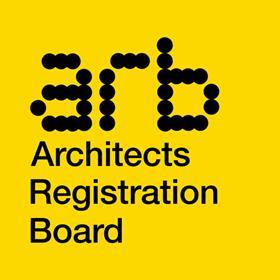The architectŌĆÖs role is in a state of flux. Post-Grenfell the construction industry desperately needs greater clarity on leadership and accountability, but can architecture rise to the challenge? With major changes to architectural education under way, Ben Flatman speaks to professionals from across property, architecture and education about the potential for a reinvigorated profession

Architecture feels like a profession that is going through a protracted crisis. Once the undisputed lead consultant on most major building projects, often acting as lead designer, contract administrator and effective project manager, it is increasingly rare today to see an architect anywhere near contract administration, or even on a building site.
In many respects these once dominant members of the construction industryŌĆÖs hierarchy have been reduced to bit-part players, now best known for producing feasibility studies, planning applications and tender packages.
Grenfell must necessarily loom large over any current discussion around construction. The final findings of the inquiry are still pending. Blame for the horrific loss of life is likely to be broadly distributed among politicians, clients, consultants, contractors, forms of procurement and product manufacturers.
But what many already perceive as one of the underlying causes of Grenfell ŌĆō fragmentation and an almost complete lack of responsibility within the construction team ŌĆō also goes to the heart of the crisis facing architects. The 2018 Hackitt Report identified a string of issues that needed urgent attention but lack of clarity on roles and responsibilities was high up the list.
For this and other reasons, the architectsŌĆÖ regulator, ARB, is proposing the first radical changes to architectural education since the 1950s, as well as introducing compulsory CPD for the first time. Can the profession reform itself in the wake of Grenfell, to re-establish its reputation for technical expertise, and professional leadership?
Where the architect was once seen as a competent professional with overall responsibility for the design, project administration and quality assurance of a building, now there is an ever-increasing number of consultants and subconsultants on most large projects. Architects are very often simply a service provider among many, and may not even be directly appointed by the client.
To many in construction this is not news ŌĆō and some may even have welcomed seeing architects taken down a peg or two. Sometimes seen as arrogant and less technically qualified than they should be, architects have also often been perceived to regard themselves as separate from ŌĆō and even superior to ŌĆō the rest of the industry.

According to Neal Shasore, head of the London School of Architecture and a ║├╔½Ž╚╔·TV the Future Commissioner, architects have long felt the need to ŌĆ£distinguish themselves from others in industryŌĆØ. The debate about what the architectŌĆÖs role is, and their place within the wider industry, reaches back well into the 19th century.
Shasore believes that BritainŌĆÖs perennial preoccupation with status and class is one factor in architectsŌĆÖ need to position themselves as the ŌĆ£intellectualŌĆØ professionals, in contrast to the artisans and tradespeople who actually make buildings.
Although architects had historically mostly been trained on the job, as apprentices in architectural practices, over time the desire to achieve academic and social parity with doctors and lawyers led to almost all architects being taught in universities.
A disconnect consequently developed between the schools of architecture, architecture firms, and the wider construction industry. Architects and architectural education arguably became ever further detached from construction.
Being an architecture student increasingly became an end in itself ŌĆō an introspective and solitary endeavour, centred on presentational pyrotechnics and individual attainment. Meanwhile, architectural practices found that fewer and fewer graduates had the technical knowledge or skills required in the workplace.
Rightly or wrongly, a growing perception developed that architects were pursuing their own agenda, separate to ŌĆō or even in open conflict with ŌĆō the needs of clients and end users.
In an attempt to seize back control over programme and costs, public and private sector clients increasingly utilised non-traditional forms of procurement, such as design and build. Architects were first marginalised, and then increasingly replaced in the leadership role by other consultants such as quantity surveyors and project managers ŌĆō perhaps because they were seen as more amenable and aligned to clientsŌĆÖ priorities.
This summary doubtless includes many gross generalisations. A huge number of architects excel in their service delivery, and technical knowledge. British architecture firms have flourished internationally, although the service they offer is often focused on the early stage design, with implementation overseen by others.
There have also been advantages for clients. ArchitectsŌĆÖ fees are almost certainly lower than they were historically (although this has presented challenges in terms of maintaining the service they deliver). Clients can more easily determine the way in which a consultant team is assembled to best suit their procurement methods and commercial imperatives. And perhaps the overbearing authority of a single consultant was never a good thing in the first place.
But in the wake of such change has also come a lack of clarity and ŌĆō most worryingly of all ŌĆō uncertainty regarding who has overall responsibility on a construction project.
Why does this matter? In one word: quality.
Without clear accountability for quality assurance, responsibility for not just fire safety but all areas of a buildingŌĆÖs compliance, become progressively less clear.
One of the big questions now facing architecture, and the wider industry, is whether there is any desire for architects to step into a broader leadership role within construction. Are architects in a position to embrace the new principal designer role, as set out in the 2022 ║├╔½Ž╚╔·TV Safety Act? And, if not, could ARBŌĆÖs proposed reforms help change that?
ARBŌĆÖs proposed reforms

Architecture is the only profession in construction to be independently regulated. The Architects Registration Board (ARB) was created (at the professionŌĆÖs own request) in 1997.
Architects felt that having their own regulator ŌĆō like doctors and lawyers ŌĆō would help cement their professional status. But with only protection of title, and few barriers to entry in the building design sector, architecture has often struggled to maintain its position in the industry, as well as its fee levels.
RIBA, the architectsŌĆÖ professional body, and ARB have often had a tetchy relationship. For the last decade RIBA had been trying to progress its own educational reforms agenda, and had partly blamed lack of progress on resistance to change from within ARB.
Now, under a different senior leadership team, ARB is proposing changes that go far beyond RIBAŌĆÖs previous, more modest proposals, and is facing some resistance from RIBA president, Simon Allford.
Under the current system, students can theoretically qualify in seven years, but most architects take an average of nine and a half years. Since the introduction of student fees, student debt levels have soared. Both RIBA and ARB are agreed that this is too long, but there is less agreement on how best to deliver a streamlined, shorter route to registration.
ARB is proposing to replace the current RIBA Parts 1, 2 and 3. Part 1, which equates to a Level 6 undergraduate degree, will no longer be accredited by ARB, with aspiring architects now to be assessed at only two points ŌĆō at Level 7 (masterŌĆÖs degree level) and through a separate assessment of professional competence.
The stated aim is to replace the emphasis on inputs and time spent at university with outputs, and a focus on competencies. In theory, education and training providers will be able to create new courses that deliver the required competencies within a shorter timeframe.
The changes are also aimed at increasing diversity within the profession. With the recent introduction of apprenticeships and apprenticeship degrees as routes into architecture, the hope is that those previously put off by the length and cost of an architectural education will see it as a more attractive route. ŌĆ£Earn while you learnŌĆØ apprenticeship routes are already changing the educational landscape.
By removing the requirement for an undergraduate degree in architecture, ARB will potentially open up shorter routes to registration for mid-career professionals and students with non-cognate degrees, or even no degree, to ŌĆ£convertŌĆØ to architecture more easily. This is similar to the US, where approximately half of all registered architects did not study architecture at undergraduate level.
This raises the possibility of architecture being able to draw on a broader range of expertise and talent by attracting more people with industry experience, such as engineers, contractors and surveyors. Diversity matters, many believe, if we want the built environment to reflect the needs and aspirations of the whole of society.
ARB is also introducing compulsory CPD for all UK architects for the first time. As well as recommending eight CPD activities per year, ARB is also likely to specifically mandate certain areas of CPD, such as fire safety.
The 2022 Professional Qualifications Bill followed the UKŌĆÖs departure from the EU and gave ARB the power to negotiate mutual recognition agreements (MRAs) with countries outside the EU. ARB became the first UK professional regulator to take advantage of these post-Brexit opportunities when it negotiated MRAs with the US, Australia and New Zealand. UK architectural qualifications are now recognised in these countries, potentially making it easier for individuals and architectural practices to work overseas.
The regulator

Hugh Simpson is chief executive and registrar of the Architects Registration Board (ARB), the professionŌĆÖs regulator
ŌĆ£A whole number of things have come together,ŌĆØ says Simpson of the recent move towards radical reform of architectural education. He highlights ŌĆ£a sense of urgency around the climate crisis and GrenfellŌĆØ.
ARBŌĆÖs reforms have emerged following discussions with the RIBA, as well as other professional bodies, such as RTPI and the RICS. Simpson says ARB is keen ŌĆ£to collaborate across related professionsŌĆØ, although RIBA has recently expressed significant concerns about the proposals.
Quality is too variable and access dependant on social networks
Simpson sees the move to reform architectural education as resulting from a desire to strengthen the profession and improve collaboration. He believes positive change will only come through equipping students with the ŌĆ£necessary skills, knowledge, experience and behavioursŌĆØ to succeed.
One of the things he recognises that the reforms have not resolved is the issue around professional practical experience. ŌĆ£Quality is too variable and access dependant on social networks,ŌĆØ he says.
ŌĆ£Regulators get into trouble when they prescribe a particular route,ŌĆØ he says of the way in which the proposed reforms open up the sector to new models of architectural education. ARB is ŌĆ£keen not to mandate particular approachesŌĆØ and wants ŌĆ£to encourage innovationŌĆØ.
This will involve moving away from an education system that is currently still very much focused on the time that students spend in education, to more of an emphasis on ŌĆ£outcomesŌĆØ. Simpson says ARB wants to move away from ŌĆ£mandating routesŌĆØ towards ŌĆ£facilitating routesŌĆ” Our overall message is: ŌĆśare you competent to practise as an architect?ŌĆÖ ŌĆØ
The RIBA

Jenny Russell is director of education and learning at the RIBA
Russell says the RIBA has long held the ambition to increase the number of routes into the profession, but expresses concern that ARBŌĆÖs changes could damage government funding for architectural education by undermining the current tripartite structure.
She believes the profession will ŌĆ£have to push to ensure architecture is funded properlyŌĆØ, pointing out that it is a ŌĆ£teaching-heavyŌĆØ course, that in the US and Europe has a standard requirement for 600 credits, normally over a five-year period.
The profession will have to push to ensure architecture is funded properly
Accepting the challenges that face any attempt at education reform, she recognises that there is an unhealthy attitude within the profession that ŌĆ£you need to be everything and do everythingŌĆØ. She believes any system will struggle if it sets out to ŌĆ£create students who know everything for the here and nowŌĆØ.
Russell believes a priority for the education system is to give students the ŌĆ£ability to learn and be adaptableŌĆØ in the workplace. Guarding against an attempt to create oven-ready professionals, she says ŌĆ£there has to come a point where thereŌĆÖs a line drawn [under education] when students can enter the registerŌĆØ.
Of ARB she says: ŌĆ£With all the new powers theyŌĆÖve been given, theyŌĆÖre feeling pressure to add more and more competences.ŌĆØ She believes this will lead to ŌĆ£more and more learning outcomes on schools of architectureŌĆØ. Russell is concerned that the proposed outcomes-based approach ŌĆ£doesnŌĆÖt put any expectations or responsibility on practice..ŌĆØ
Highlighting the fact that a significant proportion of women under the current system leave around the Part 3 stage, she argues that ARBŌĆÖs reforms wonŌĆÖt address this. ŌĆ£WhatŌĆÖs making it not a good environment for women?ŌĆØ she asks.
ŌĆ£Will it do what they are saying they want it to do?ŌĆØ she asks of ARBŌĆÖs reforms, before adding that she is ŌĆ£not sure the issues are about Part 1 and Part 2ŌĆØ.
Russell argues that an on-going problem for all students exists around ŌĆ£getting the [workplace] experience to demonstrate competenciesŌĆØ. She would like to see a practical experience tool-kit, with ŌĆ£a code of practice on how students are dealt with in practiceŌĆØ.
She welcomes the move to increase the diversity of routes and sees the potential for students coming to the UK from overseas, with degrees that are not accredited in the UK.
Like RIBA president Simon Allford, Russell questions the way in which the reforms potentially undermine the traditional undergraduate degree in architecture, which she sees as having ŌĆ£real valueŌĆØ in the way that it teaches students to ŌĆ£think through three-dimensional problemsŌĆØ.
The employer

Dav Bansal is an architect and director at Howells
Bansal welcomes the way in which the reforms seek to open up entry to the profession ŌĆ£from various backgroundsŌĆØ, including through apprenticeships and non-cognate degrees or professional experience. The changes should increase opportunity for ŌĆ£many more, hopefully improving access into our professionŌĆØ, he says.
ŌĆ£I would like to see a more lean, pragmatic and engaging approach to architectural education, he adds. He believes ARBŌĆÖs reforms need to combine academic and practice experience ŌĆ£simultaneouslyŌĆØ.
Those who choose to undertake part-time education generally do better in the long-term due to their ongoing experience in practice
ŌĆ£We see many talented graduates who struggle with working in practiceŌĆØ, Bansal says, and argues that apprenticeships could go a long way to addressing this.
ŌĆ£At Howells, we sometimes find that those who choose to undertake part-time education generally do better in the long term due to their ongoing experience in practice. Their skills in working with colleagues and consultants as a team, appreciating real-life challenges and solving problems efficiently are just a few of the benefits in combining early experience in practice with education.
ŌĆ£I truly believe schools of architecture will struggle to train students for life in practice as this is not their area of expertise,ŌĆØ he says, arguing that engaging local practices to provide in-studio workshops or talks ŌĆ£will only go so farŌĆØ.
ŌĆ£What is really needed is to develop a programme where working in practice to build core skills and competency while exploring your imagination and theoretical knowledge at university goes hand in hand,ŌĆØ says Bansal.
ŌĆ£Let the practitioners and professors do what they are best at and work together to train the architects of tomorrow. We are already seeing this approach work effectively in other creative industries including automotive ŌĆō so letŌĆÖs learn from this.ŌĆØ
The educator

Kevin Singh is head of the Manchester School of Architecture and a director of TKA Space Studio
Singh welcomes the way in which the reforms seek to open up access and increase diversity. He observes that ŌĆ£unless you decide you want to be an architect at 14ŌĆØ, it is incredibly difficult to make the transition at a later stage.
But he is concerned that students coming into architecture with non-cognate degrees and experience will lack lots of the required presentational and spatial skills and instinctively feels that it will be very difficult for them to progress from a standing start. However, he does acknowledge that a similar system works well in the US, albeit typically with a three-year masters programme.
He believes that the RIBA itself has no plans to stop validating Part 1 courses and notes that many schools of architecture will continue to require an undergraduate degree as a prerequisite for entry to masters level.
He is sceptical about how much demand there will be from students with non-cognate degrees and experience, and points out that only two universities ŌĆō Portsmouth and South Bank ŌĆō have so far offered the Level 6 apprenticeship degree. He believes that ŌĆ£market forcesŌĆØ will dictate the future landscape in architectural education.
I think schools [of architecture] are a lot more responsible than people think
Of criticisms that architectural education is not equipping students with experience of interdisciplinary working, sustainable design or fire safety, he says that the RIBA has been pushing this agenda for some time, and that ŌĆ£most schools I know are addressing these issuesŌĆØ.
ŌĆ£I think schools [of architecture] are a lot more responsible than people think,ŌĆØ Singh says, noting that many critics of the current system are ŌĆ£not necessarily up to speed with what schools doŌĆØ.
He also highlights the increasing use of live projects in architecture schools to develop collaborative working and exposure to the real-life challenges of construction. Each year Manchester School of ArchitectureŌĆÖs graduate students engage with a range of groups, through , to deliver small-scale structures such as ŌĆ£community kitchens and eco shedsŌĆØ that have social impact and teach skills around client engagement and project management.
He points to moves within a number of architectural schools towards multidisciplinary working, in order to help students think outside of their architecture silo and treat other professions with respect. ŌĆ£ThereŌĆÖs a bit of a culture shift happening with the younger generation,ŌĆØ he says.
Speaking of his own generation, Singh states that ŌĆ£we were taught to dislike the QS and the planner. But the world has moved on. ItŌĆÖs a trajectory weŌĆÖve been on for some time.
ŌĆ£There is only so much you can teach at university. Some of it you have to learn in practice. ItŌĆÖs education, itŌĆÖs not training.ŌĆØ
Even so, Singh believes that Manchester is doing as much as it can to equip its students for the workplace. ŌĆ£Students do cost plans and carbon capture ŌĆō they do a lot more stuff than some practices.ŌĆØ
The school also works closely with industry to ensure its graduates are highly employable. ŌĆ£ItŌĆÖs not just about architecture,ŌĆØ he says, but also about equipping the students with ŌĆ£skills for their working lifeŌĆ” for life beyond graduationŌĆØ.
The developer

Martyn Evans is creative director at LandsecU+I
Evans perceives a ŌĆ£conundrumŌĆØ at the heart of the debate about the role of architects relating to how architects perceive themselves, and in turn how they are perceived by the wider industry. He believes the future shape of architectural education will play an important part in how architects choose to define their role.
Referencing the trail of unaccountability that led to the Grenfell tragedy, he ponders: ŌĆ£WhereŌĆÖs the responsibility? Nobody was clear whose responsibility it was.ŌĆØ
He notes that ŌĆ£people did die because of thatŌĆØ and believes the problem lines in ŌĆ£the systemŌĆØ, which ŌĆ£has to be put rightŌĆØ.
For Evans, architects face a simple choice. Do they want to accept their reduced status and role within construction, or is there a desire to address the crisis in industry and step up to fill the current accountability void.
Some are very savvy and can have a conversation about commercial viability. IŌĆÖd like to see more architects understand development
He ponders why architects have lost responsibility within the industry. ŌĆ£Is it because they donŌĆÖt want it? Or because industry doesnŌĆÖt want to give it to them?ŌĆØ
He recognises that there is a significant mountain for architects to climb. ŌĆ£ThereŌĆÖs a great lack of respect for architects from the developer community,ŌĆØ he says.
Evans perceives a ŌĆ£profound divergence between architects and developers as they get olderŌĆØ. He says that ŌĆ£when itŌĆÖs bad, developers treat architects as just another line in the service providersŌĆØ.
With a career that started as a creative in retail, working alongside Anita Roddick, Evans prides himself on ŌĆ£understandingŌĆØ architects, but acknowledges that they are often perceived as ŌĆ£pie in the skyŌĆØ thinkers by the rest of the industry.
By the same token, he believes that many architects ŌĆ£think developers are philistinesŌĆØ. He says he often found himself having to act as interpreter between the two groups, which led to growing frustration. ŌĆ£That lack of sympathy starts young,ŌĆØ he says.
He has made bridging the gap one of his key priorities. ŌĆ£IŌĆÖd like to see people in my industry have more respect for architects and what they do.ŌĆØ In 2016, he established the (YADA) to facilitate greater mutual understanding.
Evans teaches part-time at Manchester and the Bartlett, where he describes himself as providing ŌĆ£a real-world voiceŌĆØ for the architecture students. ŌĆ£I behave like a client. Some say itŌĆÖs really useful. Some say I shouldnŌĆÖt be doing it ŌĆō itŌĆÖs ŌĆśstifling creativityŌĆÖ.ŌĆØ
He notes that qualifying as an architect takes a long time and is highly demanding. But he is also not the first to question what architects are actually learning. ŌĆ£WhatŌĆÖs the seven years for? Is the quality of teaching delivering? It produces a lot of people who donŌĆÖt seem to live in the real world.ŌĆØ
At the same time, he is very complimentary about what a good architect brings to the table. He thinks they are often undervalued and believes, at their best, they offer technical and regulatory responsibility and environmental expertise.
ŌĆ£Some are very savvy and can have a conversation about commercial viability. IŌĆÖd like to see more architects understand development.ŌĆØ
For Evans there is also clearly a quid pro quo between what service architects are able to offer and the status and fees they can command. ŌĆ£Maybe it should be less onerous to qualify,ŌĆØ he says. ŌĆ£But, if itŌĆÖs less onerous, you cannot expect [architects] to hold the same responsibility.ŌĆØ
>> Also read: Time for Plan BEE: collaborative learning that helps deliver a more competent industry
He asksŌĆØ ŌĆ£If you reduce the technical teaching, donŌĆÖt you reduce the likelihood [that architects] will bear the responsibility for the technical work?ŌĆØ
He believes architects have the potential to redefine their role and status. ŌĆ£ItŌĆÖs about architects working harder in a trying economic environment to be better service providers and value creators.ŌĆØ
At the same time, he points out that, if the industry wants architects to take on a greater level of responsibility, then industry needs to treat them differently. ŌĆ£If architects are to be held to account as highly qualified technically, they need to be treated that way. We need to hand them responsibility.
ŌĆ£If you treat them as just one on a list of suppliers, they will not respond.ŌĆØ

Join the in Westminster on 27 September to hear from leading figures across the construction industry and find out more about the work of the commission.
The day will include panel debates on net zero, digital transformation and building safety as well as talks from high-profile keynote speakers on future trends and ideas that could transform the sector.
There will also be the chance to feed in your ideas to the commission and to network with other industry professionals keen to share knowledge.
About the commission
The ║├╔½Ž╚╔·TV the Future Commission is a 12-month project looking at radical and challenging ideas that could help transform the built environment.
The campaign aims to tap into innovative ideas, amplify them and be an agent for change.
The major projectŌĆÖs work will be guided by a panel of major figures who have signed up to help shape the commissionŌĆÖs work culminating in a report published at the end of the year.
The commissioners include figures from the world of contracting, housing development, architecture, policy-making, skills, design, place-making, infrastructure, consultancy and legal. See the full list here.
The project is looking at proposals for change in eight areas:
- Education and skills
- Housing and planning
- Energy and net zero
- Infrastructure
- ║├╔½Ž╚╔·TV safety
- Project delivery and digital
- Workplace culture and leadership
- Creating communities
>> EditorŌĆÖs view: And now for something completely positive - our ║├╔½Ž╚╔·TV the Future Commission
>> Click here for more about the project and the commissioners
║├╔½Ž╚╔·TV the Future is also undertaking a countrywide tour of roundtable discussions with experts around the regions as part of a consultation programme in partnership with the regional arms of industry body Constructing Excellence. There is also a young personŌĆÖs advisory panel.




























No comments yet